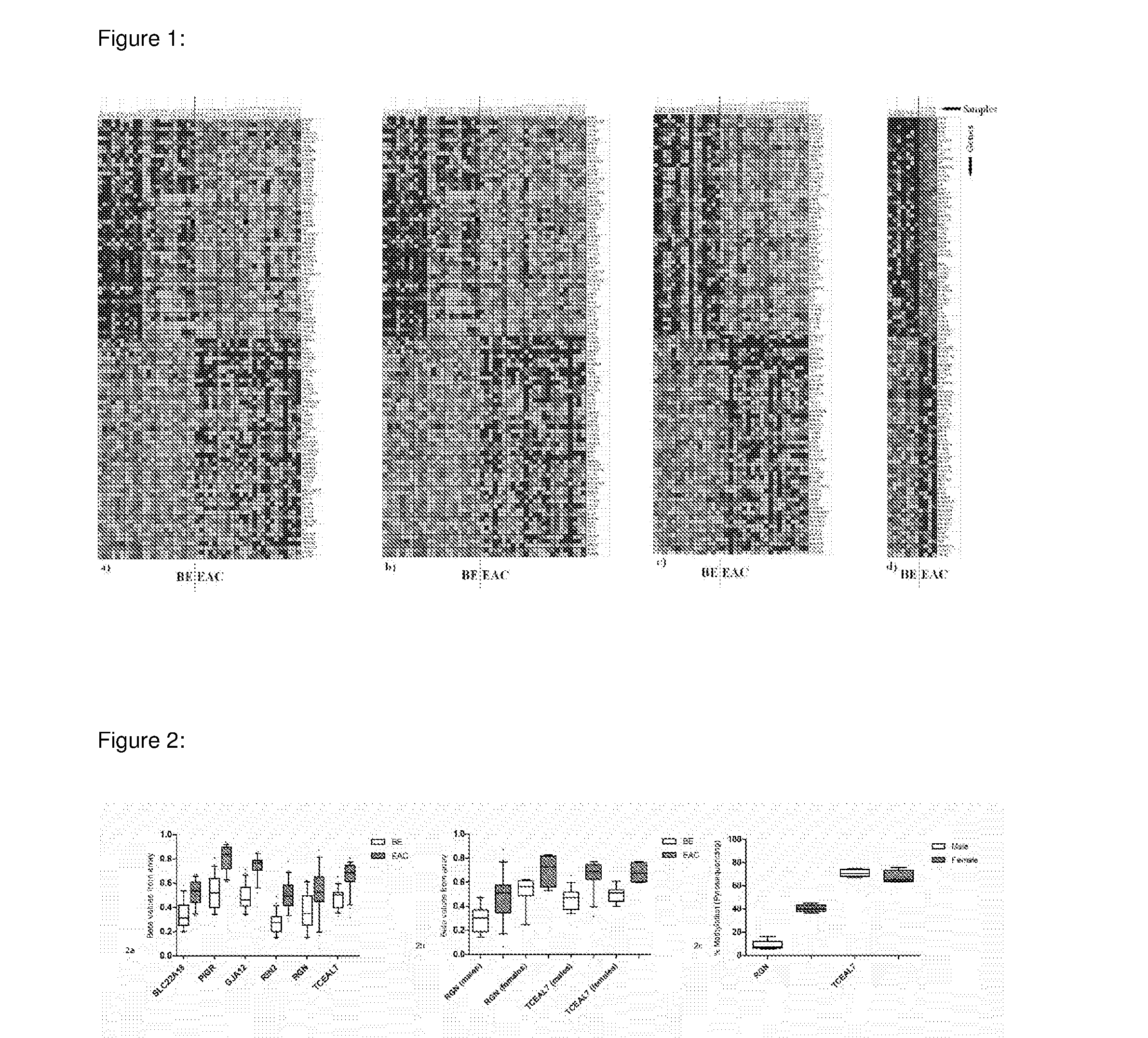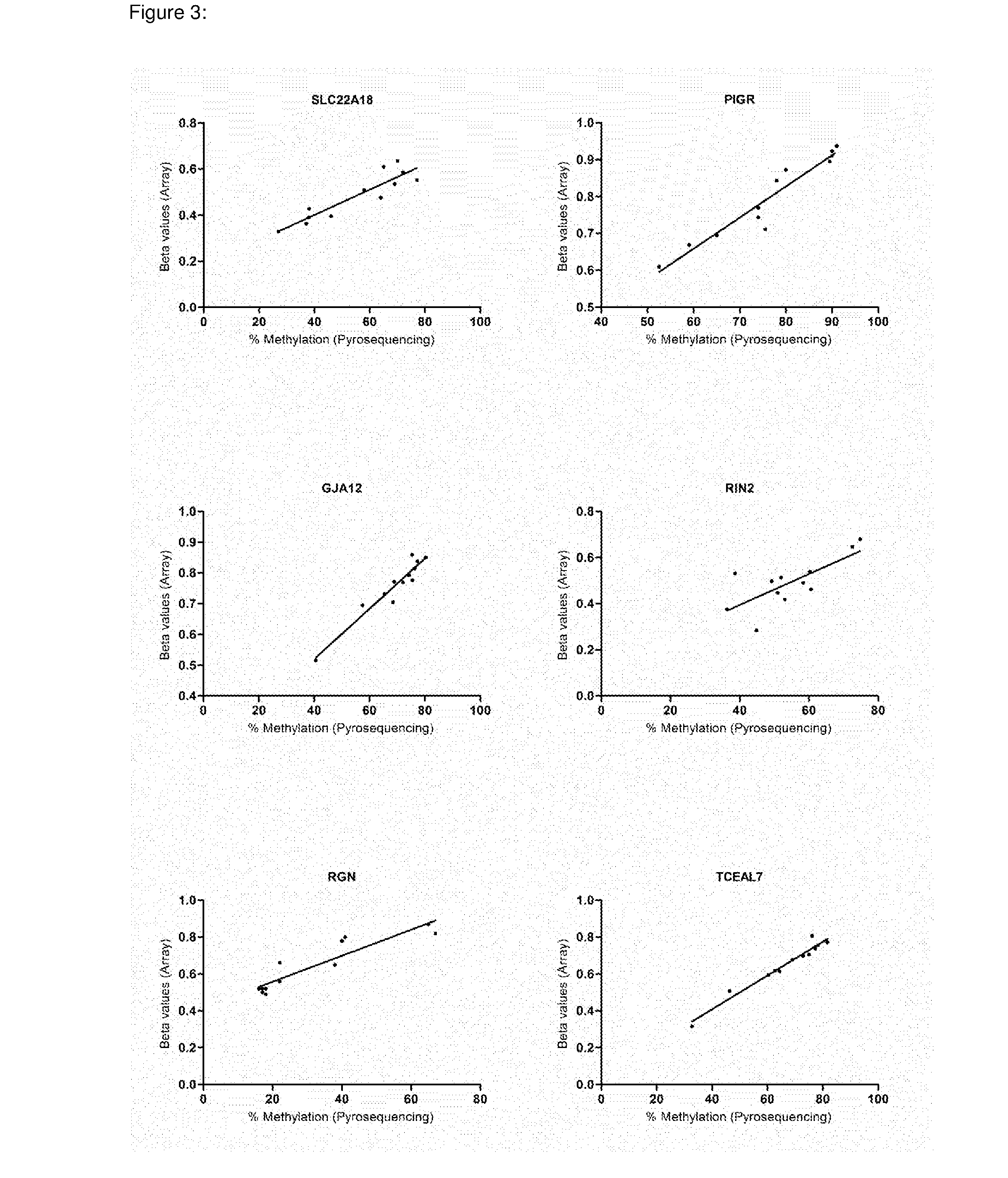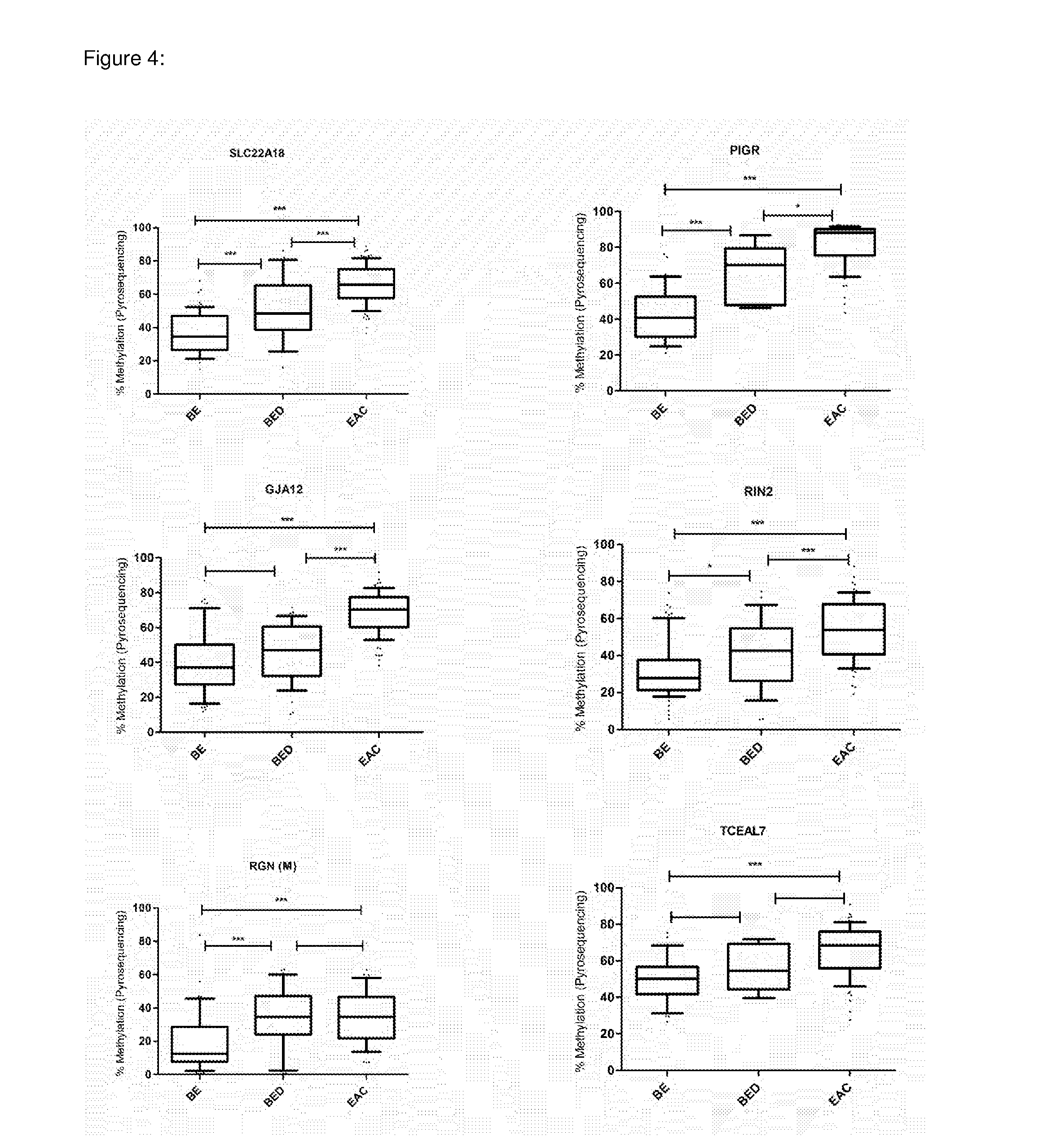Methods to assess the likelihood of dysplasia or esophageal adenocarcinoma
a technology of esophageal adenocarcinoma and likelihood assessment, which is applied in the field of methods to assess the likelihood of dysplasia or esophageal adenocarcinoma, can solve problems such as the problematic endoscopic surveillance of the barrett's esophagus (be), and achieve the effect of improving outcomes and saving surveillance costs
- Summary
- Abstract
- Description
- Claims
- Application Information
AI Technical Summary
Benefits of technology
Problems solved by technology
Method used
Image
Examples
example 1
Widespread Changes in DNA Methylation were Observed Between BE and EAC
[0161]Illumina HumanMethylation27 BeadChips were used to assess and compare methylation levels of 27,578 individual CpG loci spanning 14,475 genes and 110 miRNA promoters in 22 BE and 24 EAC samples (GEO accession no: GSE32925). Signal-to-noise ratio and two-sided Wilcoxon tests were used to rank genes showing the greatest difference in methylation (both hypermethylation and hypomethylation) between the BE and EAC, and from this a ‘class marker’ gene set was identified that was able to clearly distinguish between the two phenotypes (FIG. 1). 23% of all the genes present on the array showed a statistically significant difference in methylation (Wilcoxon P<0.05). On the whole hypermethylation was observed to be slightly more prevalent (1,764 / 14,475—12.18%) as compared to hypomethylation (1,590 / 14,475—10.98%) in EAC vs. BE (Wilcoxon P<0.05). Out of the 51 imprinted genes present on the array (list obtained from www.g...
PUM
 Login to View More
Login to View More Abstract
Description
Claims
Application Information
 Login to View More
Login to View More - R&D
- Intellectual Property
- Life Sciences
- Materials
- Tech Scout
- Unparalleled Data Quality
- Higher Quality Content
- 60% Fewer Hallucinations
Browse by: Latest US Patents, China's latest patents, Technical Efficacy Thesaurus, Application Domain, Technology Topic, Popular Technical Reports.
© 2025 PatSnap. All rights reserved.Legal|Privacy policy|Modern Slavery Act Transparency Statement|Sitemap|About US| Contact US: help@patsnap.com



